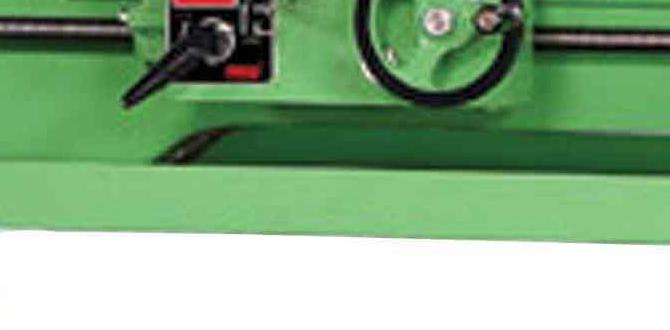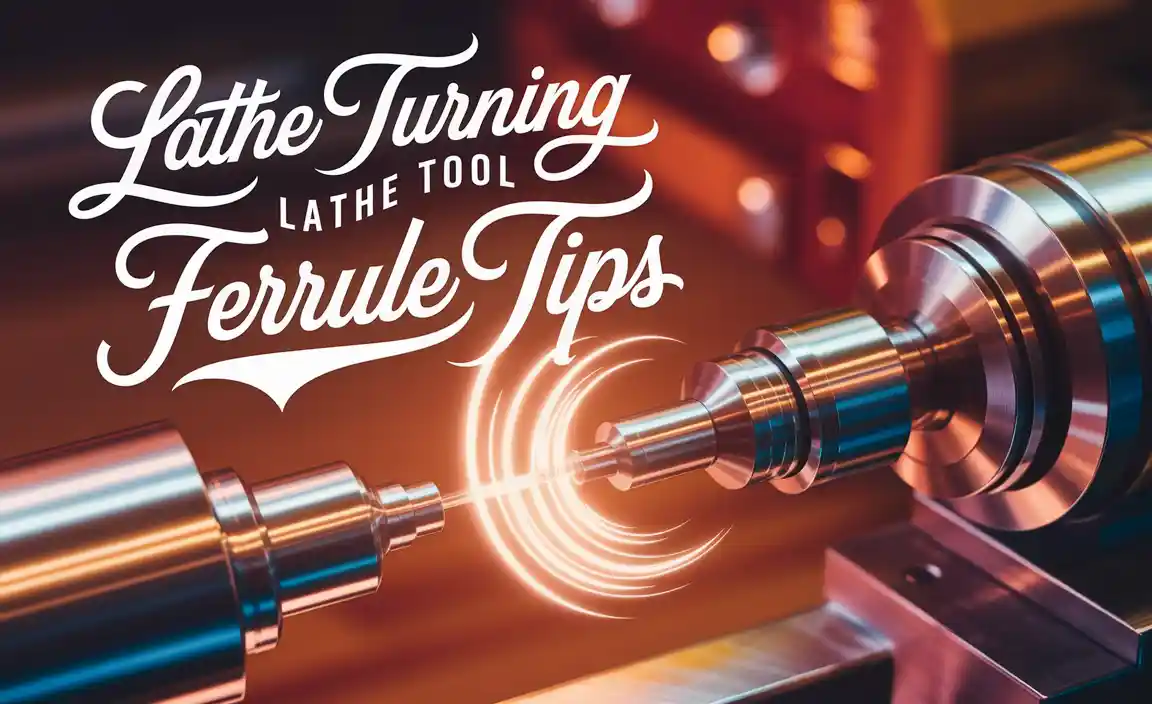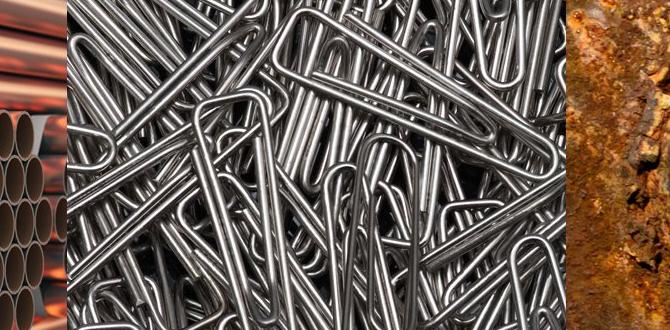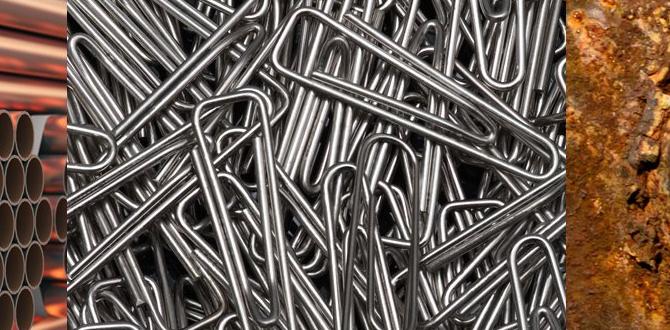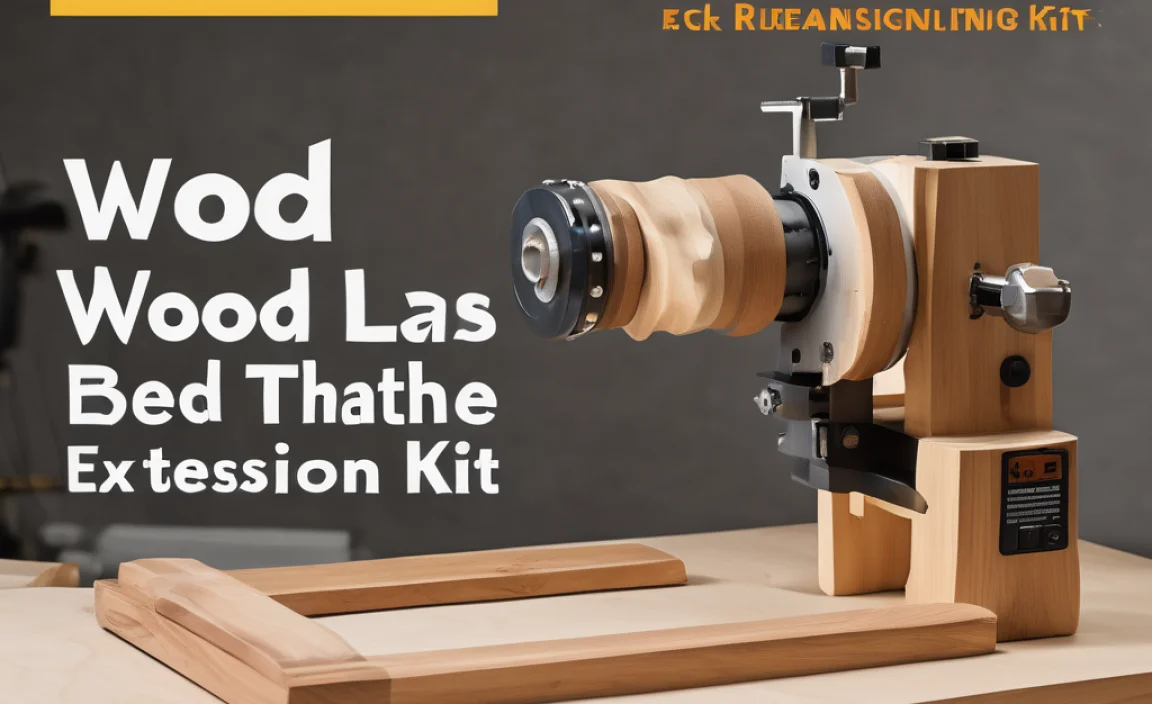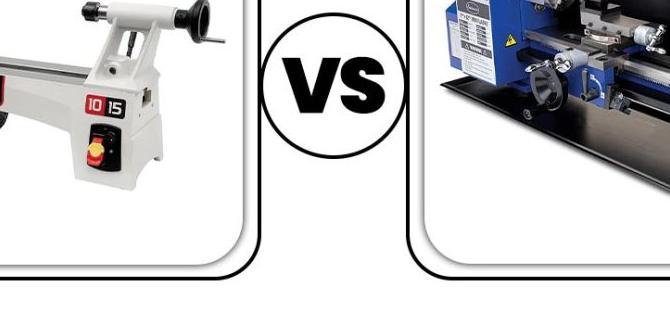Build your own wood lathe tool sharpening jig! This DIY guide offers a simple, cost-effective way to keep your chisels razor-sharp, improving your turning and saving money. Get ready to sharpen like a pro with this essential project.
Wood Lathe Tool Sharpening Jig DIY: Essential Guide
Keeping your woodturning tools sharp is crucial for both safety and the quality of your work. Dull tools can dig in unexpectedly, leading to frustration and potentially dangerous catches. Many woodturners find themselves struggling with consistent sharpening, often resorting to expensive commercial jigs. But what if you could build a highly effective sharpening jig yourself, saving money and gaining a deeper understanding of your tools? This guide will walk you through creating a simple, yet robust, DIY sharpening jig that will help you achieve consistently sharp edges on your wood lathe chisels.
We’ll break down the process into easy-to-follow steps, showing you exactly what you need and how to assemble it. By the end, you’ll have your own custom jig ready to make your tools sing. Let’s get started on making your woodworking experience smoother and more enjoyable!
Why You Need a Sharpening Jig for Your Wood Lathe Tools
As any woodturner knows, a sharp chisel is a joy to use. It glides through the wood, creating shavings rather than dust, and allows for precise control. Dull tools, on the other hand, are the enemy of good woodworking. They require more force, leading to fatigue, and increase the risk of accidents. Think of a dull chisel like a butter knife trying to cut through steak – it’s a struggle, and the results are rarely pretty.
Sharpening freehand can be tricky. Holding the tool at the exact correct angle consistently, especially for beginners, is a challenge. Even small variations can dramatically affect how the tool cuts. This is where a sharpening jig becomes invaluable. It acts as a guide, ensuring your tools are presented to the sharpening stone or wheel at the precise angle needed for optimal edge geometry. Investing a little time and a small amount of money into a DIY jig means consistently sharp tools, better results, and a safer workshop environment.
A good jig not only helps maintain the correct bevel angle but also ensures you approach the sharpening surface consistently. This leads to a more uniform edge and extends the life of your tools. Plus, knowing how to maintain your tools properly is a fundamental skill for any woodturner.
Understanding Tool Angles and Bevels
Before we dive into building the jig, let’s quickly touch on why angles matter. Most woodturning tools have a primary bevel angle, which is the main angle ground onto the cutting edge. For common bowl gouges, this is often around 30-45 degrees. For spindle gouges and scrapers, it can be different. The secondary bevel, or micro-bevel, is a small, steeper angle ground on top of the primary bevel, creating a sharper, more durable cutting edge.
Your sharpening jig needs to be able to hold your tool securely at these angles. The beauty of a DIY jig is that you can often set it up for the angles you use most frequently. Understanding the geometry of your tools will help you set up your jig correctly for the best performance. A quick search on reputable woodworking sites like Wood Magazine’s sharpening basics can offer more in-depth information on tool geometry and sharpening techniques.
Tools and Materials for Your DIY Sharpening Jig
The beauty of a DIY jig is that you can often build it with materials you might already have in your workshop or with readily available lumber. We’ll focus on a simple yet effective design, often based on common lumber dimensions. This ensures it’s accessible and cost-effective for any beginner.
Essential Materials:
- Wood: You’ll need some sturdy lumber. Common choices include hardwood like oak, maple, or beech for durability, or even good quality pine. Aim for pieces that are flat and straight.
- Fasteners: Wood screws are essential for assembly.
- Hardware: You might need a threaded rod, some nuts, and washers for an adjustable element, depending on the design, or a simple bolt and wingnut for locking.
- Non-slip material: A piece of rubber, cork, or even sandpaper can be glued to the base to prevent the jig from sliding on your grinder or sharpening stone.
Essential Tools:
- Measuring Tape: For accurate measurements.
- Pencil: For marking.
- Saw: A handsaw, miter saw, or table saw to cut your wood to size.
- Drill and Drill Bits: To pre-drill holes and create clearance.
- Screwdriver or Drill Driver Bit: To drive screws.
- Clamps: To hold pieces together while assembling.
- Optional: Sandpaper or a plane to smooth rough edges.
For those looking at more advanced options or seeking inspiration, resources on tool maintenance from organizations like the Woodturners Guild often showcase various jig designs and techniques.
Step-by-Step Guide: Building Your Wood Lathe Tool Sharpening Jig
This guide outlines a common and effective design for a DIY wood lathe tool sharpening jig. It’s adaptable, so feel free to modify its dimensions slightly to best suit your tools and workspace.
Step 1: Design and Planning
Before cutting any wood, sketch out your jig. A common design involves a central block that holds the tool and an angled base that slides against your sharpening surface. You’ll need to decide on the dimensions based on the size of your tools and the sharpening method you use (grinder, sharpening stones, etc.). A typical jig might have a base around 6-8 inches long and a block that raises the tool to a usable angle.
Step 2: Cutting the Wood Pieces
Based on your design, cut the main components. You’ll likely need a base piece and a piece that acts as the tool rest/guide. For instance:
- Base: A rectangular piece, perhaps 8 inches long by 4 inches wide.
- Tool Rest Block: A block that will sit on top of the base, angled to present your tool to the sharpening surface. This could be a piece about 4 inches long by 3 inches wide. You’ll need to cut an angle on this piece – often around 30-45 degrees is a good starting point, but this depends on your tools.
- Optional: You might add small side supports to the base to keep the tool rest block from sliding.
Ensure your cuts are square and precise for a stable and accurate jig.
Step 3: Creating the Angled Tool Rest
This is a critical step. You need a surface that holds your tool at a consistent angle. If you’re using a grinder, you’ll want a channel or slot cut into this block, or a flat surface where you can rest the tool’s bevel. For sharpening stones, you want a flat surface that allows the tool to sit at the correct angle against the stone.
A simple approach is to cut a piece that has a ramp. You might cut an angle into a block. For example, if your base is 4″ wide, you could have a piece that is 3″ wide and tapers from 2″ high on one side to 1″ high on the other, creating a slope. This slope will then be where your tool rests.
Example Dimensions for an angled block:
Imagine a block 4 inches long, 3 inches wide. One edge is 2 inches tall, the opposite edge is 1 inch tall. When placed on the base, this creates a ramp. You then place your tool on this ramp, with its bevel touching the sharpening surface.
Step 4: Assembly
Position the angled tool rest block onto the base. Ensure it’s firmly in place and the angle is oriented correctly for your sharpening setup. You’ll likely want to attach it using wood screws.
- Pre-drill: Drill pilot holes through the base and into the underside of the tool rest block.
- Secure: Drive wood screws through the base into the block. Using at least two screws is recommended for stability.
- Optional Additions: If your design includes side supports or a stop block, attach those now.
Use clamps to hold the pieces together while you drill and screw for a tight fit.
Step 5: Adding a Guide or Fence (Optional but Recommended)
To ensure consistent results, it’s highly beneficial to have a way to guide the tool along the sharpening surface. This is often a “fence” or stop. You can achieve this in a few ways:
- Adjustable Fence: Drill and tap a hole in the base or tool rest block to accept a threaded rod. Attach a piece of wood or metal to this rod with a nut. This allows you to adjust the position of the fence. Use a wingnut on the threaded rod for easy adjustments.
- Fixed Fence: Screw a small block of wood perpendicular to the base, acting as a stop for your tool.
This fence helps you push the tool forward and backward along the sharpening surface at a consistent depth, crucial for maintaining the bevel.
Step 6: Incorporating a Tool Clamp (Considered)
For supreme consistency, some jigs have a way to clamp the tool in place. This can be as simple as a bolt with a wingnut that presses down on the tool shank, or more complex setups using cam clamps. For a basic DIY jig, simply resting the tool on the angled block and against the fence is often sufficient, especially if you practice consistent pressure.
Step 7: Finishing Touches and Non-Slip Base
Smooth any rough edges with sandpaper. You can apply a coat of oil or varnish if you wish, but it’s not essential. The most important finishing touch is to add a non-slip material to the bottom of the jig. This prevents it from sliding around on your grinder’s rest or sharpening bench.
- Cut a piece of rubber mat, cork sheeting, or even heavy-grit sandpaper to match the size of the jig’s base.
- Glue it securely to the bottom using a strong adhesive like contact cement or wood glue.
Using Your DIY Sharpening Jig
Now that your jig is built, let’s see how to use it effectively. The goal is to hold your tool at the correct angle and move it consistently across the abrasive surface.
Step 1: Set Up Your Sharpening Station
Place your jig on the rest of your grinding wheel or sharpening stone. Ensure it’s stable and won’t move during use. If you are using stones, you might want a damp cloth or other method to keep them wet and remove swarf.
Step 2: Position Your Tool
Place the bevel of your woodturning tool against the angled surface of the jig. Position your tool so that it rests against the fence (if you’ve added one). The fence ensures that you push the tool forward and backward across the abrasive at a consistent depth, maintaining the bevel angle.
Step 3: Maintain the Angle and Pressure
Gently apply downward pressure on the tool’s handle to keep the bevel firmly against the jig’s angled surface and the abrasive. Move the tool back and forth across the sharpening surface in a smooth, controlled motion. Avoid rocking the tool; keep the bevel angle consistent with what the jig promotes.
Step 4: Sharpen Both Sides (If Applicable)
For tools like gouges, you’ll typically sharpen from the flutes down. Ensure you achieve a consistent grind on both sides of the cutting edge. Rotate the tool as needed to access the entire bevel.
Step 5: Check for a Burr
The sign of a properly sharpened edge is a small “burr” or wire edge that forms on the opposite side of the cutting edge. You can feel this by gently running your fingernail away from the edge. If you feel a slight catch, you’ve likely achieved a sharp edge.
Step 6: Progress to Finer Abrasives
After grinding on a coarser wheel or stone, move to finer grits to hone the edge. This removes grinding marks and refines the cutting edge for smoother cuts. A leather strop with honing compound is an excellent final step.
Using your jig consistently will train your muscle memory for holding the correct angle, even when you’re not using the jig itself.
Jig Variations and Enhancements
The basic jig design can be adapted and improved upon. Here are a few ideas to consider as you become more familiar with your jig and sharpening needs:
Adjustable Angle Jigs
More advanced designs allow you to adjust the angle of the tool rest. This can be achieved with a pivot point and a locking mechanism, such as a bolt with a wingnut, or by using a slotted piece of metal and screws.
Chisel Holders
For straight chisels or scrapers, a simple channel milled into the top of the jig or guide can provide a secure holder. You can add a clamp or even strong magnets to keep the tool from slipping.
Grinding Wheel Specific Jigs
Some jigs are designed to perfectly match the curve of a specific grinding wheel, optimizing the contact area for sharpening.
Magnets for Tool Holding
Powerful rare-earth magnets can be embedded into the jig to hold metal tools securely in place, eliminating the need for clamps and simplifying tool placement.
Table: Common Woodturning Tool Angles
Understanding the typical angles for your tools helps in setting up your jig. These are general guidelines, and specific tools or turning styles might call for slight variations.
| Tool Type | Primary Bevel Angle | Secondary Bevel Angle (Optional) | Typical Use |
|---|---|---|---|
| Bowl Gouge | 30° – 45° | 35° – 50° | Hollowing bowls, creating coves |
| Spindle Gouge | 30° – 40° | 35° – 45° | Shaping spindles, beads, coves |
| Scraper (e.g., Round, Flat) | 45° – 60° | 60° – 75° | Shearing cuts, smoothing surfaces |
| Skew Chisel | 30° – 45° (depending on grind) | 35° – 50° | Shearing, slicing cuts for smooth finishes |
| Parting Tool | 60° – 75° | N/A | Cutting grooves, separating pieces |
Always refer to the manufacturer’s recommendations for your specific tools or consult experienced woodturners for guidance on optimal angles for your chosen tasks.
Safety First: Sharpening Your Tools Safely
While this DIY jig makes sharpening easier, safety remains paramount. Working with grinding wheels and sharp tools carries inherent risks. Always follow these safety guidelines:
- Wear Safety Glasses: Always wear impact-resistant safety glasses or a face shield to protect your eyes from flying debris.
- Use Spark Arrestors: If using a grinder, ensure you have appropriate spark arrestors in place.
- Secure Your Jig: Make sure your jig is firmly seated and will not move during sharpening. A sliding jig can lead to an unpredictable tool angle and potential injury.
- Secure Your Tool: Ensure your tool is held firmly in your hand and against the jig.
- Maintain a Safe Distance: Keep your hands and body away from the spinning wheel or abrasive surface.
- Sharp Tools are Safer: Paradoxically, a sharp tool is often safer than a dull one because it requires less force and is less likely to slip.
- Never Force It: Let the abrasive do the work. Forcing a tool can lead to uneven grinds or a loss of control.
- Allow Tools to Cool: If grinding steel tools, periodically dip them in water to prevent overheating, which can damage the temper of the steel (your tool gets softer). Your DIY jig can be useful here too, as it helps you quickly return the tool to the same angle after cooling.
- Know Your Equipment: Understand the limitations and capabilities of your grinder or sharpening system.
Resources like OSHA’s guidelines on general grinding safety can provide a broader understanding of workshop safety practices.
Troubleshooting Common Sharpening Issues
Even with a jig, you might encounter some challenges. Here’s how to address them:
- Inconsistent Edge: This usually means the tool wasn’t held

